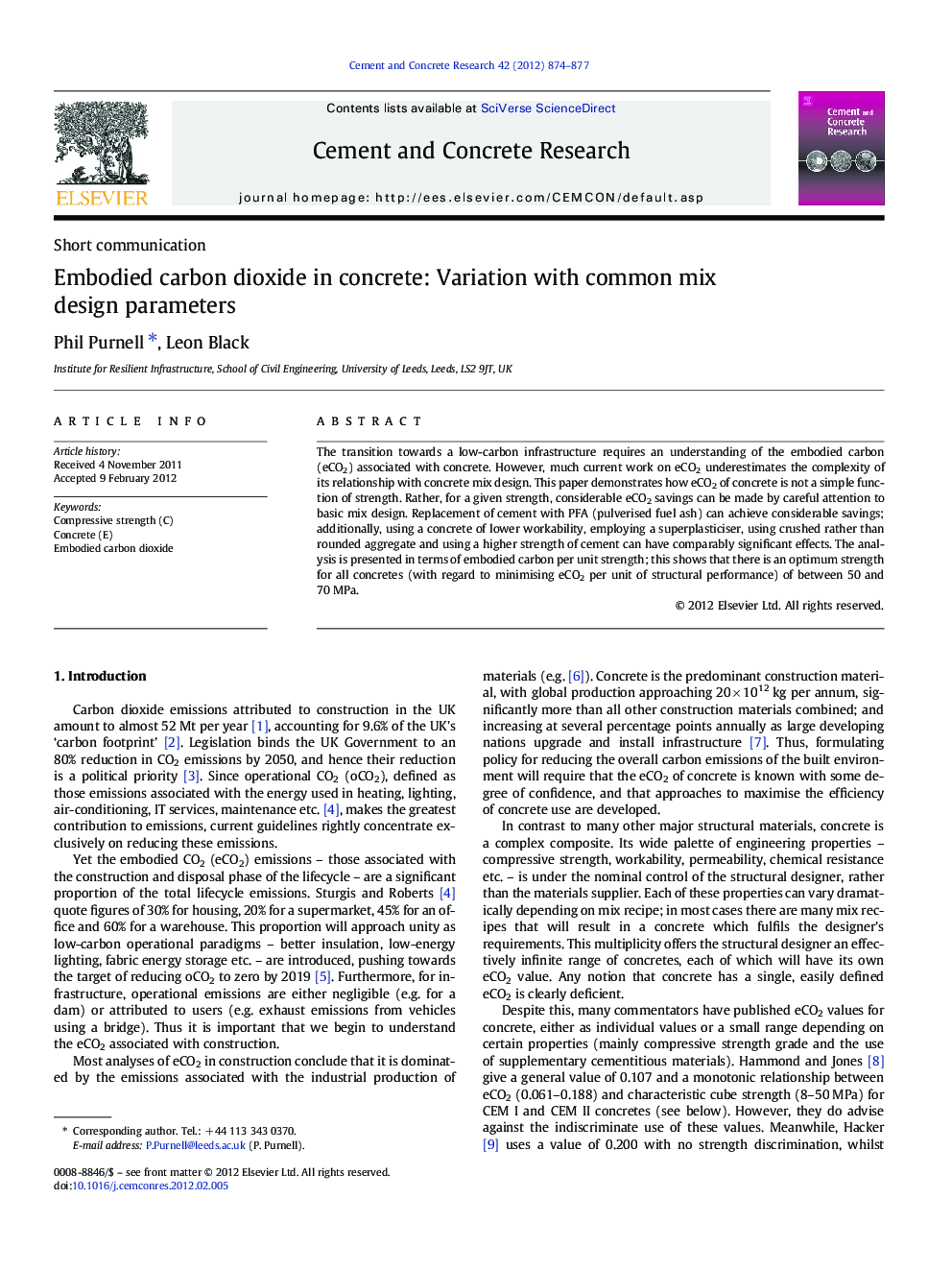| Article ID | Journal | Published Year | Pages | File Type |
|---|---|---|---|---|
| 1456607 | Cement and Concrete Research | 2012 | 4 Pages |
The transition towards a low-carbon infrastructure requires an understanding of the embodied carbon (eCO2) associated with concrete. However, much current work on eCO2 underestimates the complexity of its relationship with concrete mix design. This paper demonstrates how eCO2 of concrete is not a simple function of strength. Rather, for a given strength, considerable eCO2 savings can be made by careful attention to basic mix design. Replacement of cement with PFA (pulverised fuel ash) can achieve considerable savings; additionally, using a concrete of lower workability, employing a superplasticiser, using crushed rather than rounded aggregate and using a higher strength of cement can have comparably significant effects. The analysis is presented in terms of embodied carbon per unit strength; this shows that there is an optimum strength for all concretes (with regard to minimising eCO2 per unit of structural performance) of between 50 and 70 MPa.
